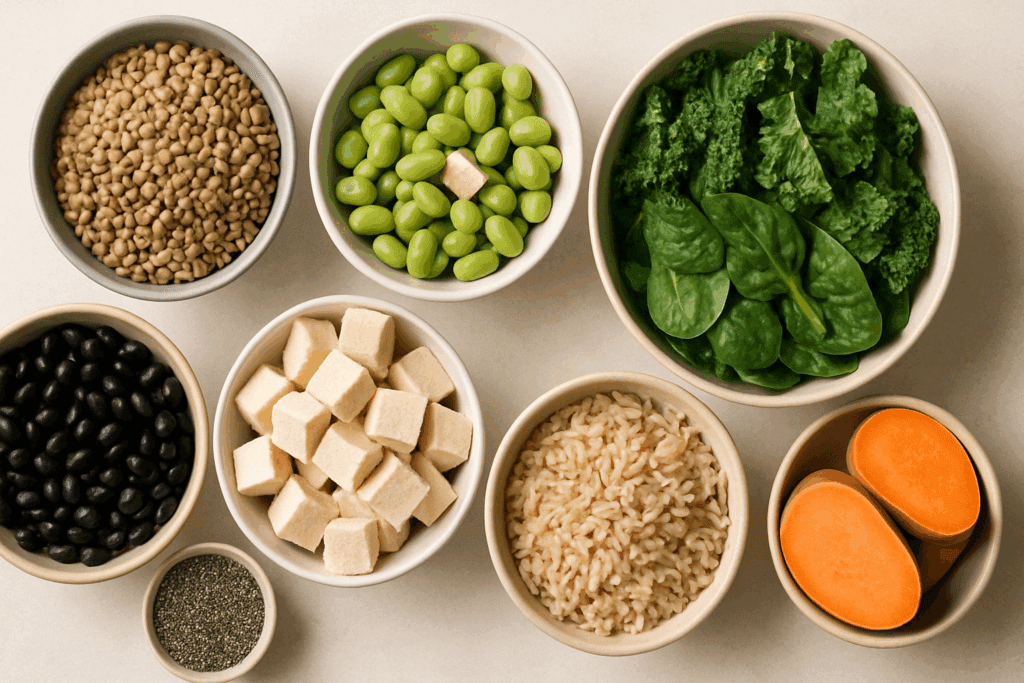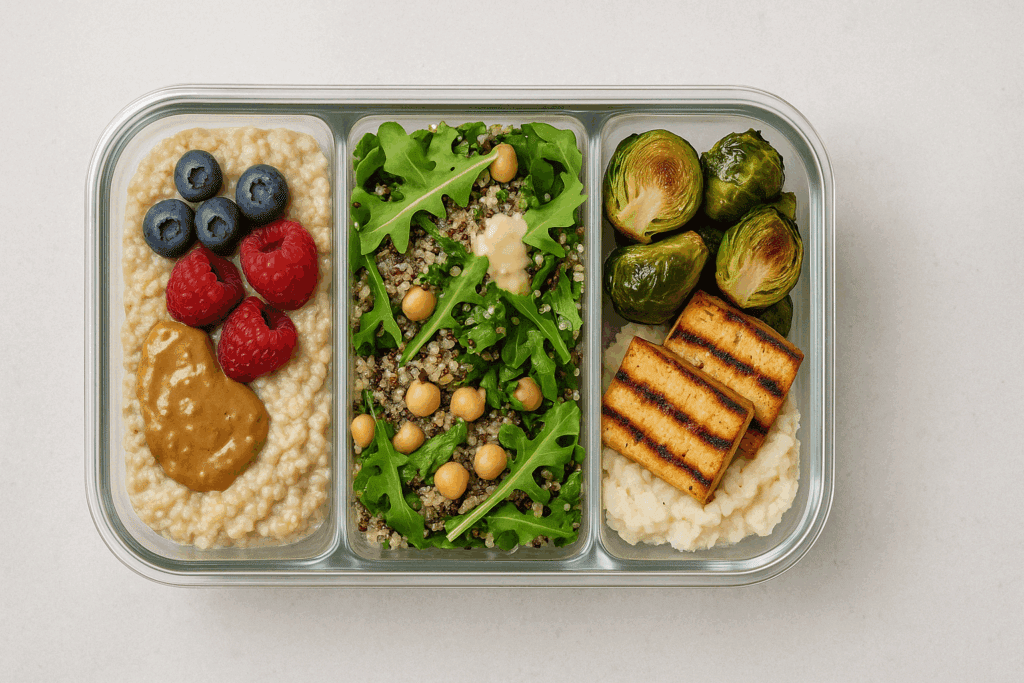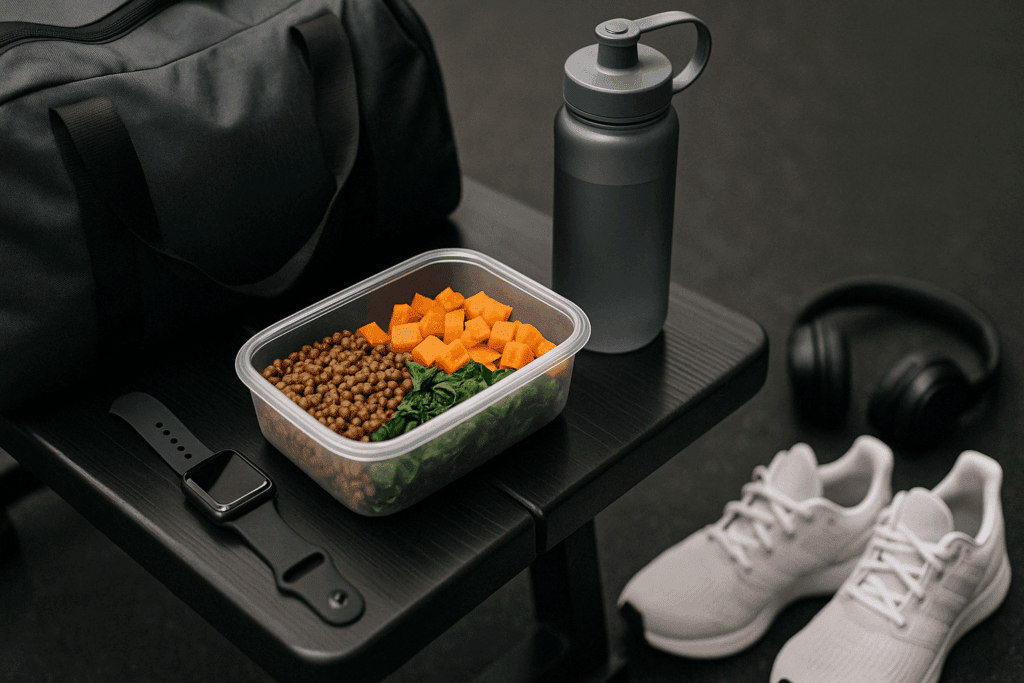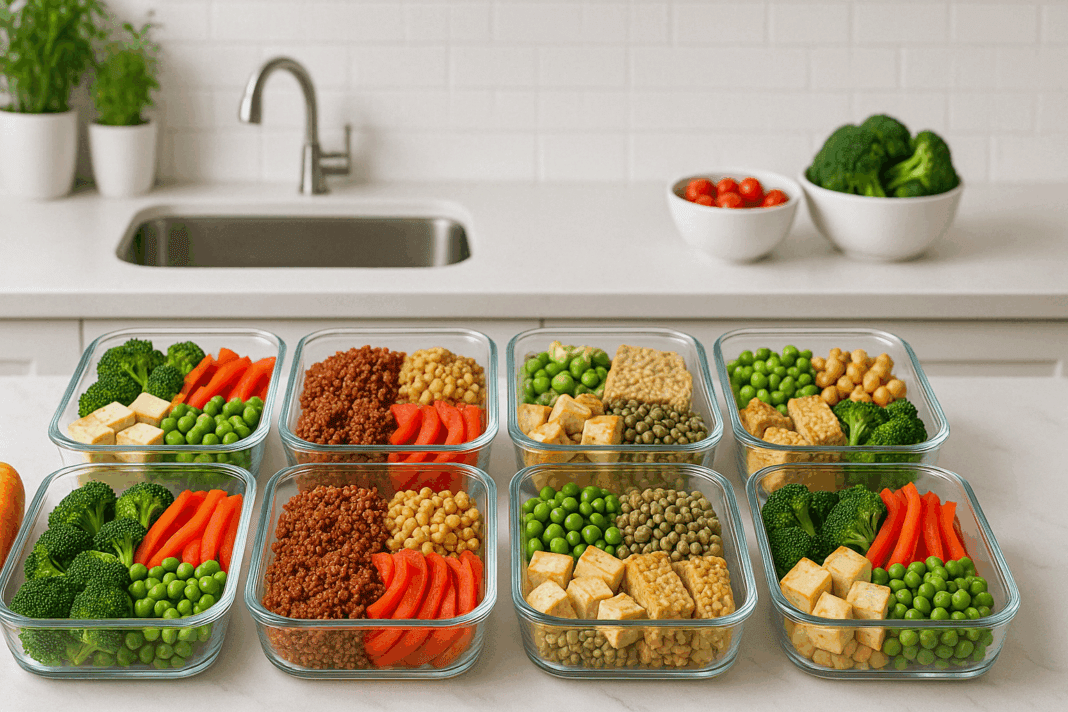The process of cutting—a phase commonly adopted in bodybuilding and fitness circles—involves reducing body fat while preserving as much lean muscle mass as possible. Unlike bulking, where the primary goal is muscle growth, cutting focuses on strategic nutrition to optimize body composition. For anyone embarking on a cutting phase, one of the most critical factors to success is knowing what to eat while cutting. This goes beyond simply slashing calories; it involves carefully selecting nutrient-dense, satiating foods that support metabolic function, muscle retention, and overall well-being.
You may also like: Smart Meal Prep for Weight Loss: Expert-Approved Lunch Ideas and Recipes to Stay on Track
Understanding the Cutting Phase and Nutritional Strategy
To understand what cutting entails, it’s important to grasp the concept of creating a calorie deficit without compromising nutritional adequacy. The foundation of any effective cutting diet meal plan includes sufficient protein, moderate healthy fats, and strategically cycled carbohydrates. The goal is not only fat loss but also the prevention of muscle breakdown—an all-too-common pitfall for those who cut calories too aggressively without adequate planning.
Muscle tissue is metabolically active, which means preserving it can help maintain a higher resting metabolic rate. Cutting meals that include high-quality plant-based proteins, whole grains, legumes, and fiber-rich vegetables not only promote satiety but also supply essential micronutrients that support cellular function during periods of caloric restriction. A well-designed food plan for cutting ensures that the body has the nutrients it needs to function optimally, even as it sheds excess fat.
Best Foods for Cutting Bodybuilding Goals
The best foods for cutting bodybuilding fat effectively are those that deliver high nutrient density relative to their caloric content. Lean plant-based proteins such as lentils, tempeh, tofu, edamame, and black beans are excellent for muscle maintenance. They are rich in branched-chain amino acids (BCAAs), particularly leucine, which plays a key role in muscle protein synthesis.
Vegetables such as spinach, kale, and broccoli not only supply fiber but are also high in iron, calcium, and vitamins that support energy metabolism. Complex carbohydrates from oats, sweet potatoes, and brown rice provide sustained energy without spiking insulin levels, a key consideration for individuals focused on optimizing fat oxidation.
Fat sources like avocados, flaxseeds, walnuts, and chia seeds provide essential omega-3 fatty acids that reduce inflammation and support cardiovascular health. These fats are especially valuable in a cutting diet because they help regulate hunger hormones, making it easier to adhere to reduced-calorie plans.

Creating a Sustainable Cutting Diet Meal Plan
A sustainable cutting diet meal plan should be built on whole food choices that are both satisfying and easy to prepare. Many people fail during the cutting phase not because of the caloric deficit itself, but due to meal fatigue and lack of preparation. Incorporating a variety of textures, colors, and flavors can keep meals interesting and reduce the likelihood of cravings or non-compliance.
Breakfast might include steel-cut oats topped with berries and a spoonful of almond butter, offering a balance of fiber, protein, and healthy fat. Lunch could feature a chickpea and quinoa salad with a lemon-tahini dressing, providing complete proteins and essential vitamins. Dinner may include grilled tofu with roasted Brussels sprouts and a side of mashed cauliflower, rounding out the day with savory satisfaction and nutrient diversity.
Cutting meal prep is one of the most effective strategies to ensure adherence to your food plan for cutting. Dedicating a few hours each week to batch-cooking grains, legumes, and vegetables can save time and reduce the temptation of processed foods that derail progress.
Comparing Cutting Meal Plans to Other Diet Approaches
When it comes to weight loss, there are numerous dietary strategies available, but not all are compatible with cutting goals. A common question among health-conscious readers is how cutting meal plans compare to low-carb and ketogenic diets. While the low carb diet keto diet framework reduces carbohydrate intake to prioritize fat as a fuel source, cutting diets focus more on overall caloric control and macronutrient balance.
The ketogenic diet vs low carb diet distinction lies in the degree of carbohydrate restriction. The keto diet is more extreme, typically allowing fewer than 50 grams of carbs per day, which forces the body into a state of ketosis. In contrast, low-carb diets are more flexible and may allow up to 150 grams daily. This distinction is crucial when evaluating whether is keto a low carb diet. Technically, yes—but not all low-carb diets are ketogenic.
So is keto a good diet for cutting? The answer depends on individual tolerance and goals. While keto can be effective for rapid fat loss, it often leads to reduced glycogen stores, which can negatively impact muscle fullness and workout performance. In contrast, a balanced cutting meal plan supports muscle preservation with sufficient carbs timed around workouts.
A common myth is that is keto no carbs, but this is misleading. Keto diets do include some carbs, primarily from non-starchy vegetables and nuts. Understanding this helps clarify whether is a keto diet sustainable in the long term. While it may offer benefits for specific populations, a plant-forward cutting plan is often more sustainable, enjoyable, and rich in phytonutrients.

Building a Diet Plan for Cutting Bodybuilding Safely and Effectively
To build a diet plan for cutting bodybuilding goals, macronutrient tracking and caloric awareness are essential. A common ratio for effective cutting is 40% protein, 30% fat, and 30% carbohydrate, though this can vary based on training intensity, body composition, and metabolic rate. High-protein foods are especially important, as they help retain lean muscle during a caloric deficit.
In the context of a plant-based approach, this means relying on foods like seitan, hemp seeds, and fortified plant milks to ensure adequate protein intake. Fortified nutritional yeast can also contribute not just protein, but B-complex vitamins that support energy production during workouts.
Good meals for cutting are often those that are easy to digest, minimize bloating, and can be prepared quickly. A smoothie with pea protein, frozen spinach, flaxseed, and a banana can be a quick post-workout option that supports recovery without excessive calories. Fat cutting meals that emphasize hydration, electrolyte balance, and micronutrient density offer both immediate satiety and long-term results.
Implementing Meal Plan Cutting Bodybuilding Principles Into Daily Life
A successful meal plan cutting bodybuilding strategy requires not just the right foods but also the right timing. Nutrient timing—especially around workouts—can make a measurable difference in performance and recovery. Consuming complex carbohydrates and a moderate amount of protein before training can optimize energy levels, while a post-workout meal rich in protein and antioxidants can support tissue repair.
Hydration is another critical component of cutting success. Dehydration can impair performance, reduce metabolic efficiency, and increase the risk of injury. Water-rich foods such as cucumbers, oranges, and melons can contribute to hydration goals while providing vitamins and fiber.
To stay on track, it’s helpful to rotate meal options weekly. This allows for nutritional diversity and prevents burnout. Tracking progress through a food journal or digital app can also increase accountability and help identify which cutting meals yield the best results for energy, satiety, and fat loss.

Tailoring a Get Ripped Meal Plan to Your Individual Needs
While general guidelines provide a solid starting point, the most effective get ripped meal plan is one that accounts for individual needs, preferences, and goals. Variables such as age, activity level, and body composition all influence caloric requirements. Personalization ensures the plan is sustainable, enjoyable, and effective.
Incorporating seasonal produce and local ingredients can enhance flavor while reducing cost. For example, incorporating zucchini noodles in place of pasta during summer months provides volume without excess calories. In colder months, hearty soups made with lentils and root vegetables can be deeply satisfying while still aligning with fat loss goals.
Supplementation may also play a role, especially for those on plant-based cutting meal plans. A high-quality vitamin B12 supplement is essential, while vitamin D, iron, and omega-3s from algae oil may be beneficial for those with identified deficiencies. However, supplements should support—not replace—a nutrient-dense whole food foundation.
Debunking Myths Around Cutting Meals and Low-Carb Approaches
Many fitness enthusiasts wonder whether low-carb approaches align with cutting goals. When comparing the ketogenic diet vs low carb diet frameworks to more traditional cutting strategies, it becomes clear that flexibility often yields greater long-term success. While keto diets are effective at rapidly depleting glycogen and promoting water loss, they may not be ideal for those focused on muscle preservation.
The belief that is keto no carbs leads many to adopt unnecessarily restrictive habits. Instead, a smart cutting strategy includes a moderate intake of slow-digesting carbohydrates, particularly around times of increased physical demand. By maintaining insulin sensitivity and providing fuel for resistance training, these carbohydrates play a crucial role in body composition.
Is keto a good diet for all? Not necessarily. For some individuals, especially those with certain metabolic conditions, it may offer benefits. However, when it comes to sustainability, the question of is a keto diet sustainable must be evaluated in light of lifestyle, food preferences, and training goals. Many people find greater adherence and results with a more inclusive approach that emphasizes nutrient quality over rigid macronutrient limits.

Why Mindful Eating Matters During the Cutting Phase
Beyond food selection and macros, mindful eating is a key component of successful cutting. Eating slowly, savoring flavors, and tuning into hunger and fullness cues can prevent overeating and promote satisfaction even in a caloric deficit. When you’re engaged with your meal—rather than distracted by screens or multitasking—you’re more likely to feel nourished and in control.
Mindful eating also reduces stress, which can otherwise sabotage cutting efforts through elevated cortisol and emotional eating. Preparing meals at home, using herbs and spices to enhance flavor, and sitting down for meals in a relaxed environment all contribute to a healthier lifestyle overall.
For those pursuing a diet plan for shredding or a food plan for cutting, these behavioral strategies are just as important as macronutrient ratios. Cultivating a healthy relationship with food ensures that progress is sustainable and health-promoting rather than a cycle of restriction and rebound.
The Power of Consistency: Building a Lifestyle, Not Just a Diet
Ultimately, the success of any cutting plan hinges on consistency and balance. The most effective fat cutting meals are the ones you enjoy enough to repeat regularly. Small, sustainable changes almost always outperform drastic overhauls in the long run. This is especially true for those integrating a cutting meal prep routine into their lifestyle.
Meal prep doesn’t have to be complicated. Even simple routines like cooking grains in bulk, chopping vegetables for the week, and storing pre-portioned snacks can remove decision fatigue and improve dietary adherence. When these habits become part of your weekly rhythm, they serve as anchors for long-term success.
By adopting a meal plan cutting bodybuilding approach that emphasizes whole foods, strategic timing, and mindful eating, it becomes easier to navigate fat loss without compromising well-being. Whether your goal is a shredded physique or simply a healthier lifestyle, the foundation remains the same: informed choices, consistent habits, and a deep understanding of what to eat while cutting.

Frequently Asked Questions: Cutting Meals and Strategic Nutrition for Fat Loss
1. How can I adapt cutting meals for a busy lifestyle without sacrificing results?
Cutting meals don’t need to be overly time-consuming to be effective. If you’re managing a hecticschedule, the key lies in strategic batch preparation and nutrient-dense simplicity. Consider preparing a base, such as roasted vegetables and a high-protein grain like quinoa, at the start of the week. From there, you can rotate proteins like tofu, tempeh, or lentils to keep things interesting. With proper planning, even five-minute meals can align with a well-designed food plan for cutting, ensuring you’re not compromising on your diet plan for cutting bodybuilding goals.
2. What are some unexpected plant-based ingredients that enhance a cutting diet meal plan?
Beyond traditional staples, lesser-known ingredients like lupini beans, freekeh, and teff can addsignificant nutritional value to a cutting diet meal plan. These grains and legumes offer impressive fiber and protein content, which aid digestion and prolong satiety. Seaweed, often overlooked, provides iodine, which supports thyroid health—a critical factor in metabolic regulation during cutting. Incorporating these unique options into cutting meal plans also adds culinary variety, making it easier to stick to long-term goals like a diet to get ripped.
3. Can emotional eating sabotage a get ripped meal plan, and how can it be managed?
Yes, emotional eating can disrupt even the most meticulously structured get ripped meal plan. Stress,boredom, and fatigue often lead to impulsive food choices that deviate from your food plan for cutting. Mindful eating practices—such as journaling before meals, creating screen-free eating zones, and recognizing emotional triggers—can significantly improve adherence. Additionally, including mood-supporting nutrients like omega-3s and magnesium from foods like walnuts and leafy greens may help stabilize emotional responses, reinforcing the psychological aspect of diet plan for shredding success.
4. Are there performance-enhancing benefits to timing good meals for cutting around workouts?
Absolutely. Eating strategically timed meals that balance protein and complex carbs before and afterworkouts can significantly influence performance, recovery, and lean muscle retention. For example, a pre-workout snack of sprouted grain toast with almond butter offers slow-digesting carbs and healthy fats. Post-workout, combining a lentil-based dish with sweet potato replenishes glycogen and stimulates muscle repair. By aligning cutting meal prep with your training schedule, you’re not just fueling workouts—you’re optimizing your meal plan cutting bodybuilding efforts.
5. What role does gut health play in optimizing a cutting diet?
Gut health is increasingly recognized as a cornerstone of effective fat loss and metabolic function.Fermented foods like kimchi, sauerkraut, and miso introduce beneficial bacteria that support digestion and nutrient absorption, especially in a restrictive cutting diet meal plan. A diverse microbiome also correlates with reduced inflammation and better insulin sensitivity, which are crucial during a calorie deficit. Incorporating these elements into cutting meals not only improves digestive comfort but may amplify the effectiveness of your overall food plan for cutting.
6. How can I make cutting meal prep more environmentally sustainable?
Eco-conscious choices in cutting meal prep can align seamlessly with health goals. Opting for locallysourced produce, bulk purchasing dry goods, and reusing containers significantly reduce environmental impact. Legumes and whole grains used in a diet plan for cutting bodybuilding also have a lower carbon footprint than animal-based options. Seasonal meal rotation, such as using squash in fall or berries in summer, ensures freshness and reduces reliance on imported goods. These strategies enhance both the sustainability and integrity of your cutting meal plans.
7. Can intermittent fasting support or hinder a diet plan for shredding?
Intermittent fasting can be a useful tool when integrated thoughtfully into a diet plan for shredding.By compressing your eating window, it may help regulate hunger hormones and improve insulin sensitivity. However, it can backfire if it leads to under-fueling, which may result in muscle loss and energy crashes. To make it work, ensure that all cutting meals within your feeding window are calorie- and nutrient-dense. Timing your workouts within this window can also enhance your body’s utilization of a well-crafted food plan for cutting.
8. What are signs that a cutting meal plan is too aggressive or unsustainable?
Warning signs include constant fatigue, irritability, digestive distress, and disrupted sleep patterns. Ifthese symptoms persist, it may indicate that your diet plan for cutting bodybuilding is too restrictive or lacks critical nutrients. While fat cutting meals are designed to maintain a caloric deficit, they shouldn’t leave you feeling depleted. Adjustments like slightly increasing portion sizes or rotating in higher-calorie good meals for cutting (such as avocado-topped whole grain bowls) can restore balance. Listening to biofeedback is essential to maintaining long-term success.
9. How do social situations affect adherence to a cutting meal plan?
Navigating social settings while on a cutting diet meal plan can be challenging but manageable withforesight. Bringing a dish that aligns with your cutting meals or eating a satiating snack beforehand can prevent poor choices. Communication also plays a role; letting friends or family know about your goals can foster support instead of resistance. Choosing restaurants with customizable plant-forward options helps you stay within the parameters of a meal plan cutting bodybuilding routine without missing out on meaningful moments. With preparation and intention, social events need not derail your progress.
10. Are there mental benefits associated with sticking to a disciplined cutting meal plan?
Yes, following a structured cutting meal plan can enhance self-discipline, confidence, and focusbenefits that often extend beyond physical health. The routine and intentionality behind a cutting diet meal plan foster a sense of achievement that supports mental well-being. Additionally, certain nutrients frequently found in fat cutting meals, such as B vitamins and omega-3 fatty acids, directly support cognitive function and mood stability. Success with a diet to get ripped often brings a positive feedback loop, reinforcing motivation in other areas of life. The psychological rewards can be as transformative as the physical ones.

Conclusion: Achieving Sustainable Fat Loss with Smart Nutrition and Mindful Planning
Cutting doesn’t have to mean bland meals, constant hunger, or unsustainable restrictions. With the right approach, it becomes a powerful opportunity to reset eating habits, enhance body composition, and develop a more mindful relationship with food. The best cutting meals are not just low in calories—they are rich in nutrients, full of flavor, and aligned with your personal goals.
Whether you’re following a traditional cutting diet meal plan, exploring a get ripped meal plan, or customizing a diet plan for cutting bodybuilding purposes, the key to success lies in strategic planning, balanced macronutrients, and consistency. Understanding the differences between the ketogenic diet vs low carb diet helps clarify whether is keto a good diet for your goals or if a more moderate approach is better suited to your needs.
Sustainability is the cornerstone of any effective fat loss strategy. Instead of wondering “is a keto diet sustainable” or being misled by the idea that “is keto no carbs,” look to whole food, plant-forward principles to guide your decisions. Prioritize variety, preparation, and mindfulness, and you’ll not only transform your physique but also cultivate a healthier, more empowered lifestyle for years to come.
Was this article helpful? Don’t let it stop with you. Share it right now with someone who needs to see it—whether it’s a friend, a colleague, or your whole network. And if staying ahead on this topic matters to you, subscribe to this publication for the most up-to-date information. You’ll get the latest insights delivered straight to you—no searching, no missing out.
Further Reading:
16 of the Best Foods for Your Healthy Weight Journey
Disclaimer
The information contained in this article is provided for general informational purposes only and is not intended to serve as medical, legal, or professional advice. While NewsHealthWatch strives to present accurate, up-to-date, and reliable content, no warranty or guarantee, expressed or implied, is made regarding the completeness, accuracy, or adequacy of the information provided. Readers are strongly advised to seek the guidance of a qualified healthcare provider or other relevant professionals before acting on any information contained in this article. NewsHealthWatch, its authors, editors, and contributors expressly disclaim any liability for any damages, losses, or consequences arising directly or indirectly from the use, interpretation, or reliance on any information presented herein. The views and opinions expressed in this article are those of the author(s) and do not necessarily reflect the official policies or positions of NewsHealthWatch.

